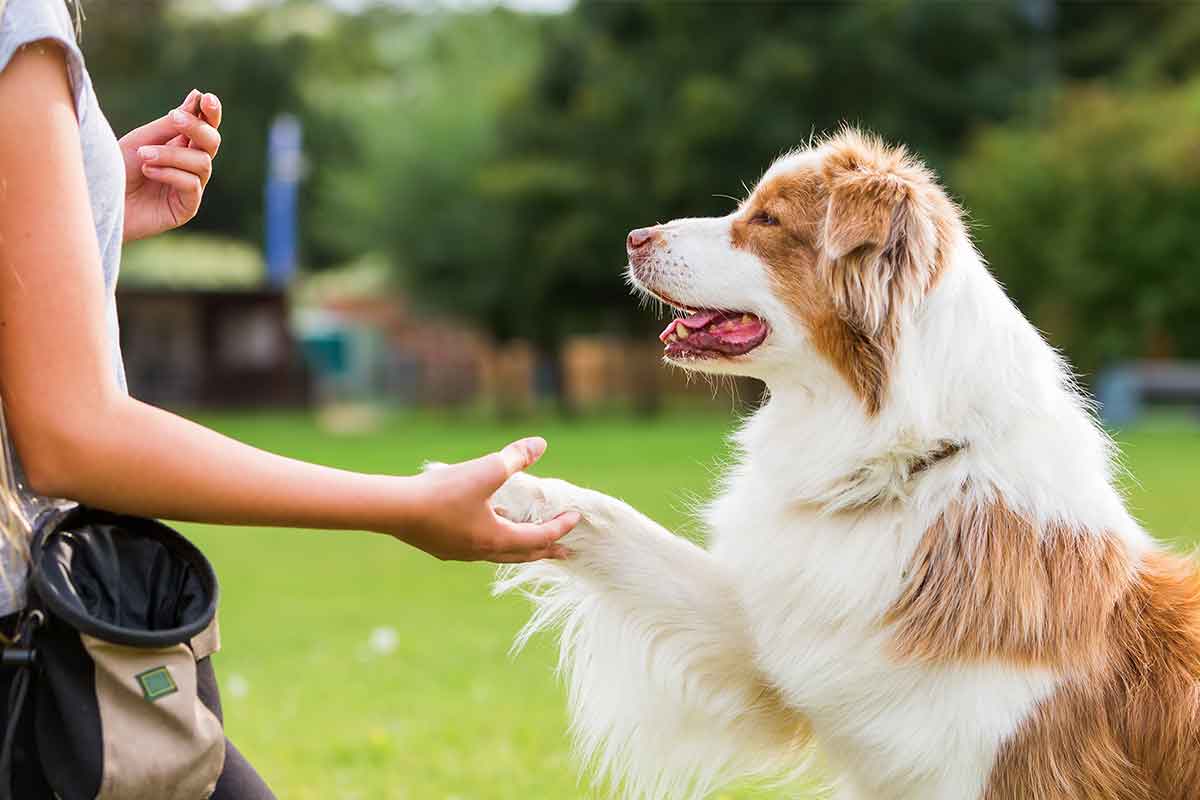Shake is a fun and easy trick to teach your dog. It also has some practical benefits beyond looking cute when she offers a paw to someone she’s met. For one, it accustoms her to having her paws touched, which can come in handy at the veterinarian or groomer.
Start with your dog in a sit. Hold a treat in your closed hand near her feet and click and reward when she uses her paw to try to open your hand. Don’t let her get the treat just for licking! Repeat this a couple of times, then hold out your closed hand without a treat. Click and reward when she touches your hand with her paw. (If you are not using a clicker, just say “Yes!” to mark when your dog does something right instead of clicking.)
Once your dog consistently hits your closed hand with her paw, switch to an open hand, still keeping it low. Repeat until she consistently places her paw in your open hand. At this point, start waiting for her paw to stay in your hand for a little bit before rewarding her. Give a reward for keeping her paw in your hand for one second, then gradually increase the length of time.
You can now gradually raise your hand higher off the ground. The best height for most dogs tends to be a little bit lower than their elbow, but do whatever is comfortable for your dog.
Once your dog consistently places her paw in your hand when you present it, you can add in a cue. Say “Shake,” before you present your hand, then click and reward when she shakes.
Proceed slowly with actually taking your dog’s paw and holding it. As your dog gains confidence, her shake will become more enthusiastic, and the pressure from her placing her paw will cause your hand to naturally close a little. From there you can work up to holding her paw for the handshake. If she ever gets upset about you holding her paw, go back to just an open hand for a couple of sessions to build up her confidence.
Have fun training your dog!
This article was reviewed/edited by board-certified veterinary behaviorist Dr. Kenneth Martin and/or veterinary technician specialist in behavior Debbie Martin, LVT








